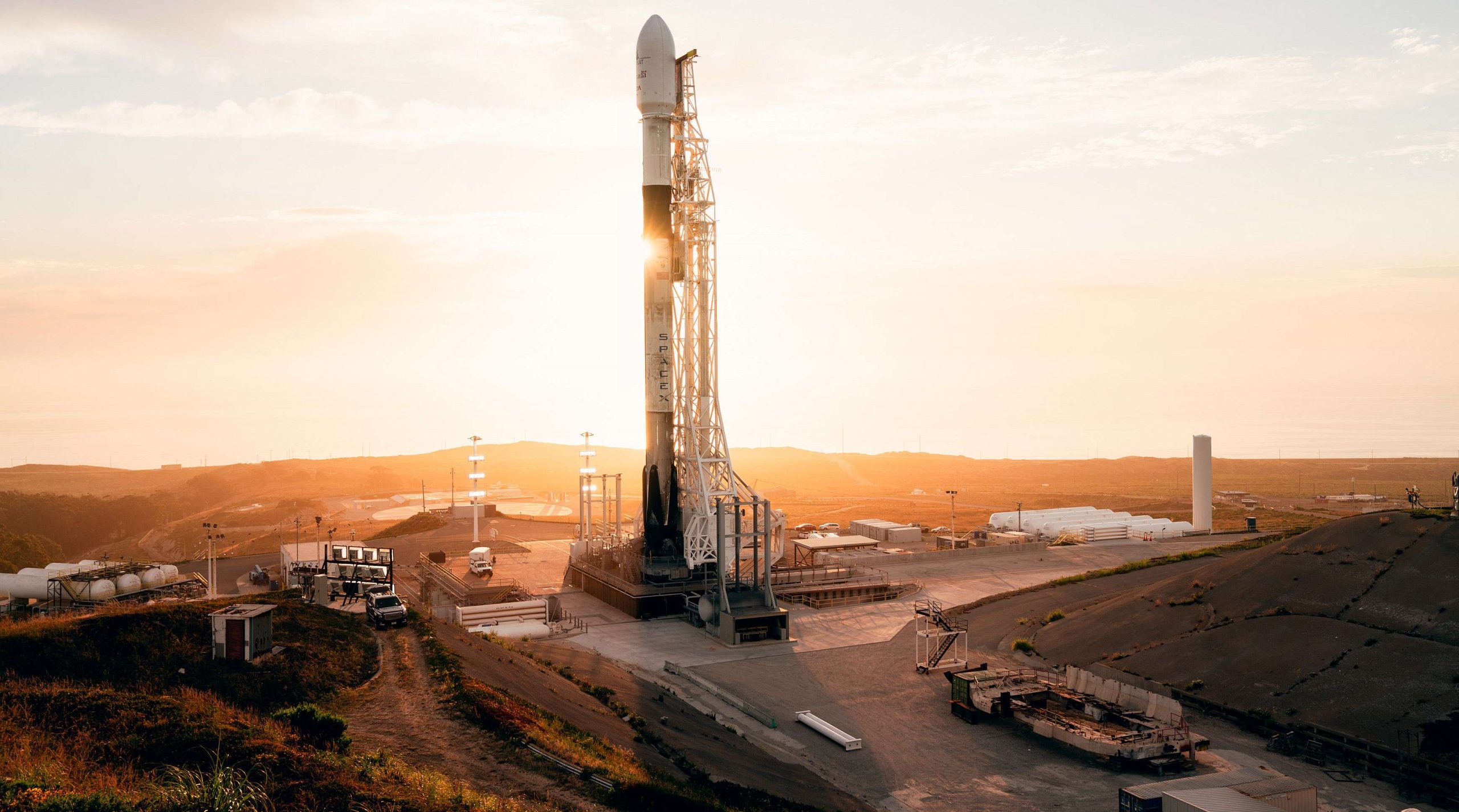
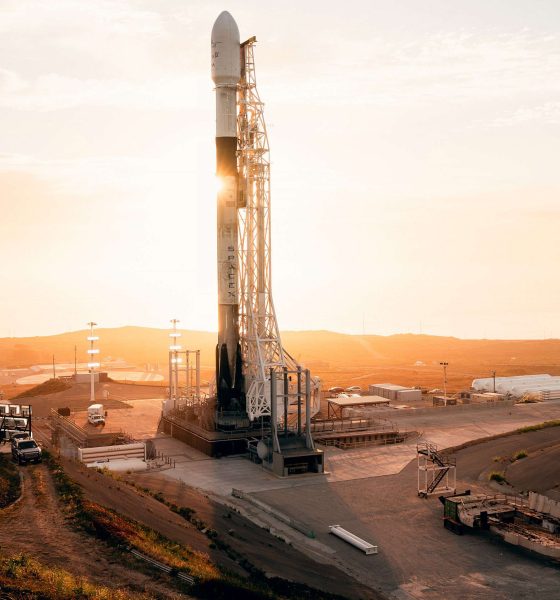
News
SpaceX schedules first West Coast Starlink launch after a quiet July
Spaceflight Now reports that SpaceX has scheduled Starlink’s West Coast launch debut no earlier than August 10th, a mission that will also mark the company’s first launch in almost six weeks.
SpaceX completed its latest Falcon 9 launch – and 20th launch of 2021 – on June 30th, successfully deploying dozens of customer small satellites and three Starlink spacecraft as part of its second dedicated Smallsat Program ‘Transporter’ mission. Since then, the United States’ Eastern Range has been eerily quiet – as if in the eye of the storm that is SpaceX’s 2021 launch manifest. While there has been no official word one way or another, it’s been speculated that the range entered a period of routine – if inconvenient – maintenance that can often last weeks and during which no launches are possible.
Scheduled to launch no earlier than July 30th, Boeing’s second attempt at an uncrewed Orbital Flight Test (OFT-2) of its Starliner crew capsule will apparently punctuate the end of that maintenance period and a return to regular operations for SpaceX. In the meantime, Spaceflight Now’s sources suggest that the company has been making the most of its downtime.
In the last two months, SpaceX has shipped two record-breaking Falcon 9 boosters – collectively responsible for 19 orbital-class launches in the last three years – from Florida to its Vandenberg Air/Space Force Base (VAFB), California launch facilities. Drone ship Of Course I Still Love You (OCISLY) wrapped up an 8000 kilometer (~5000 mi) journey from its Florida home to California’s Port of Long Beach, while brand new drone ship A Shortfall of Gravitas (ASOG) arrived at Port Canaveral to take OCISLY’s place after months of assembly.
All are part of an effort to prepare for an even busier second half of 2021. According to Spaceflight Now, H2 will begin no earlier than August 10th for SpaceX with Starlink’s first dedicated polar launch (known as “Starlink 2-1”) and the first Falcon 9 mission out of Vandenberg in nine months. Combined, Falcon 9 boosters B1049 and B1051 and drone ship OCISLY should be more than capable of pushing SpaceX’s SLC-4E pad to its limits, maxing out around one launch per month for the foreseeable future.
Last month, SpaceX FCC filings also revealed plans for a number of new dedicated Starlink launches from its Cape Canaveral LC-40 pad – unexceptional if it weren’t for the fact that details in the documents implied that those upcoming missions will also be targeting polar orbits. In other words, after successfully launching more than 1600 operational Starlink satellites into mid-inclination equatorial orbits, SpaceX now appears to be laser-focused on building out the constellation’s polar ‘shell.’
Comprised of ~1100 satellites, that polar shell will ultimately give Starlink the ability to deliver internet to aircraft and ships virtually anywhere on Earth – two established connectivity markets that are ripe for disruption. To do so, however, most or all polar Starlink satellites will need optical interlinks – lasers that allow spacecraft to route communications in space and serve customers beyond the reach of land-based ground stations. Thus far, excluding two early 2018 prototypes, SpaceX has launched 13 Starlink satellites with prototype laser links.
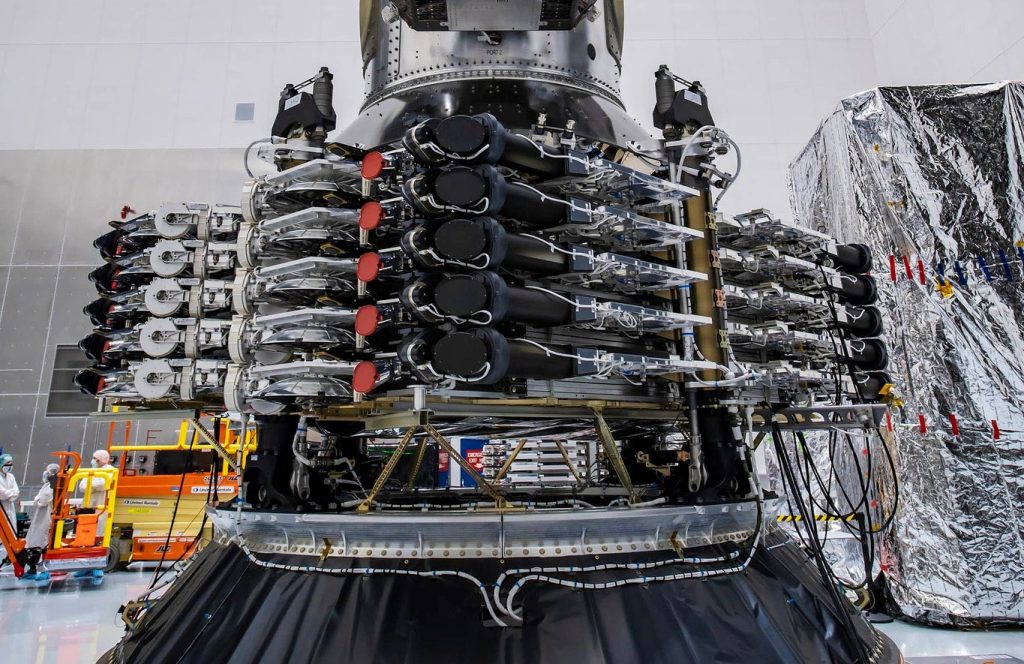
CEO Elon Musk has stated that Starlink V2 satellites are set to debut in 2022 and will all have optical interlinks. However, the upcoming “Starlink 2-1” mission’s internal name does raise the question of whether it’s referring to the start of a new constellation ‘shell,’ the first batch of V2 satellites, or both. SpaceX job postings have also hinted at “Starlink V1.5” satellites, which could potentially be as simple as existing V1 satellites outfitted with laser links.
Ultimately, only time, SpaceX, or Elon Musk will tell and the company’s first dedicated Starlink launch is scheduled as few as two weeks from now.

Cybertruck
Tesla Cybertruck earns IIHS Top Safety Pick+ award
To commemorate the accolade, the official Cybertruck account celebrated the milestone on X.

The Tesla Cybertruck has achieved the Insurance Institute for Highway Safety’s (IIHS) highest honor, earning a Top Safety Pick+ rating for 2025 models built after April 2025.
The full-size electric pickup truck’s safety rating is partly due to the vehicle’s strong performance in updated crash tests, superior front crash prevention, and effective headlights, among other factors. To commemorate the accolade, the official Cybertruck account celebrated the milestone on X.
Cybertruck’s IIHS rating
As per the IIHS, beginning with 2025 Cybertruck models built after April 2025, changes were made to the front underbody structure and footwell to improve occupant safety in driver-side and passenger-side small overlap front crashes. The moderate overlap front test earned a good rating, and the updated side impact test also received stellar marks.
The Cybertruck’s front crash prevention earned a good rating in pedestrian scenarios, with the standard Collision Avoidance Assist avoiding collisions in day and night tests across child, adult crossing, and parallel paths. Headlights with high-beam assist compensated for limitations, contributing to the top award.
Safest and most autonomous pickup
The Cybertruck is one of only two full-size pickups to receive the IIHS’ Top Safety Pick + rating. It is also the only one equipped with advanced self-driving features via Tesla’s Full Self-Driving (Supervised) system. Thanks to FSD, the Cybertruck can navigate inner city streets and highways on its own with minimal supervision, adding a layer of safety beyond passive crash protection.
Community reactions poured in, with users praising the vehicle’s safety rating amidst skepticism from critics. Tesla itself highlighted this by starting its X post with a short clip of a Cybertruck critic who predicted that the vehicle will likely not pass safety tests. The only question now is, of course, if the vehicle’s Top Safety Pick+ rating from the IIHS will help the Cybertruck improve its sales.
News
Tesla stands to gain from Ford’s decision to ditch large EVs
Tesla is perhaps the biggest beneficiary of Ford’s decision, especially as it will no longer have to deal with the sole pure EV pickup that outsold it from time to time: the F-150 Lightning.
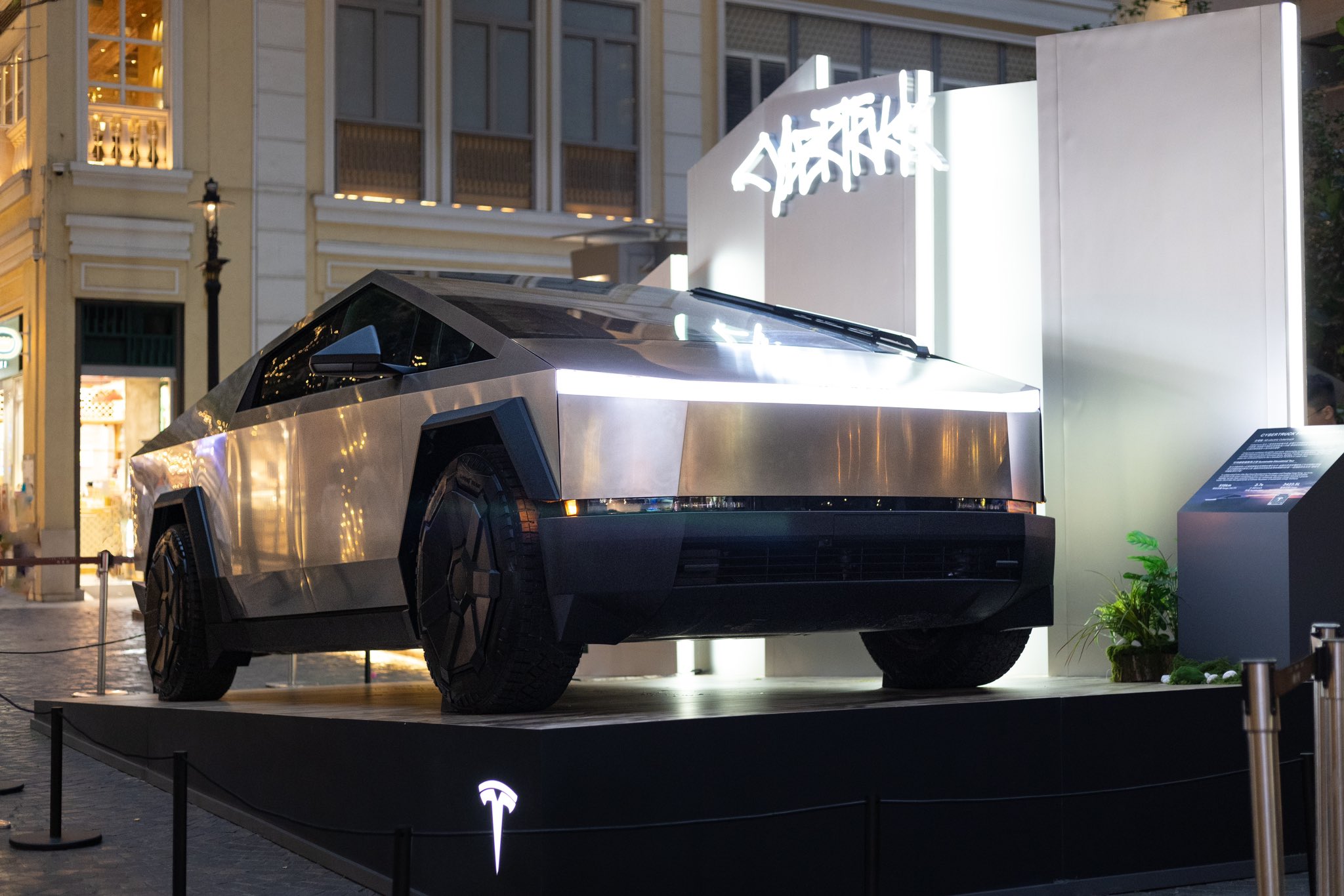
Ford’s recent decision to abandon production of the all-electric Ford F-150 Lightning after the 2025 model year should yield some advantages for Tesla.
The Detroit-based automaker’s pivot away from large EVs and toward hybrids and extended-range EVs that come with a gas generator is proof that sustainable powertrains are easy on paper, but hard in reality.
Tesla is perhaps the biggest beneficiary of Ford’s decision, especially as it will no longer have to deal with the sole pure EV pickup that outsold it from time to time: the F-150 Lightning.
Here’s why:
Reduced Competition in the Electric Pickup Segment
The F-150 Lightning was the Tesla Cybertruck’s primary and direct rival in the full-size electric pickup market in the United States. With Ford’s decision to end pure EV production of its best-selling truck’s electric version and shifting to hybrids/EREVs, the Cybertruck faces significantly less competition.
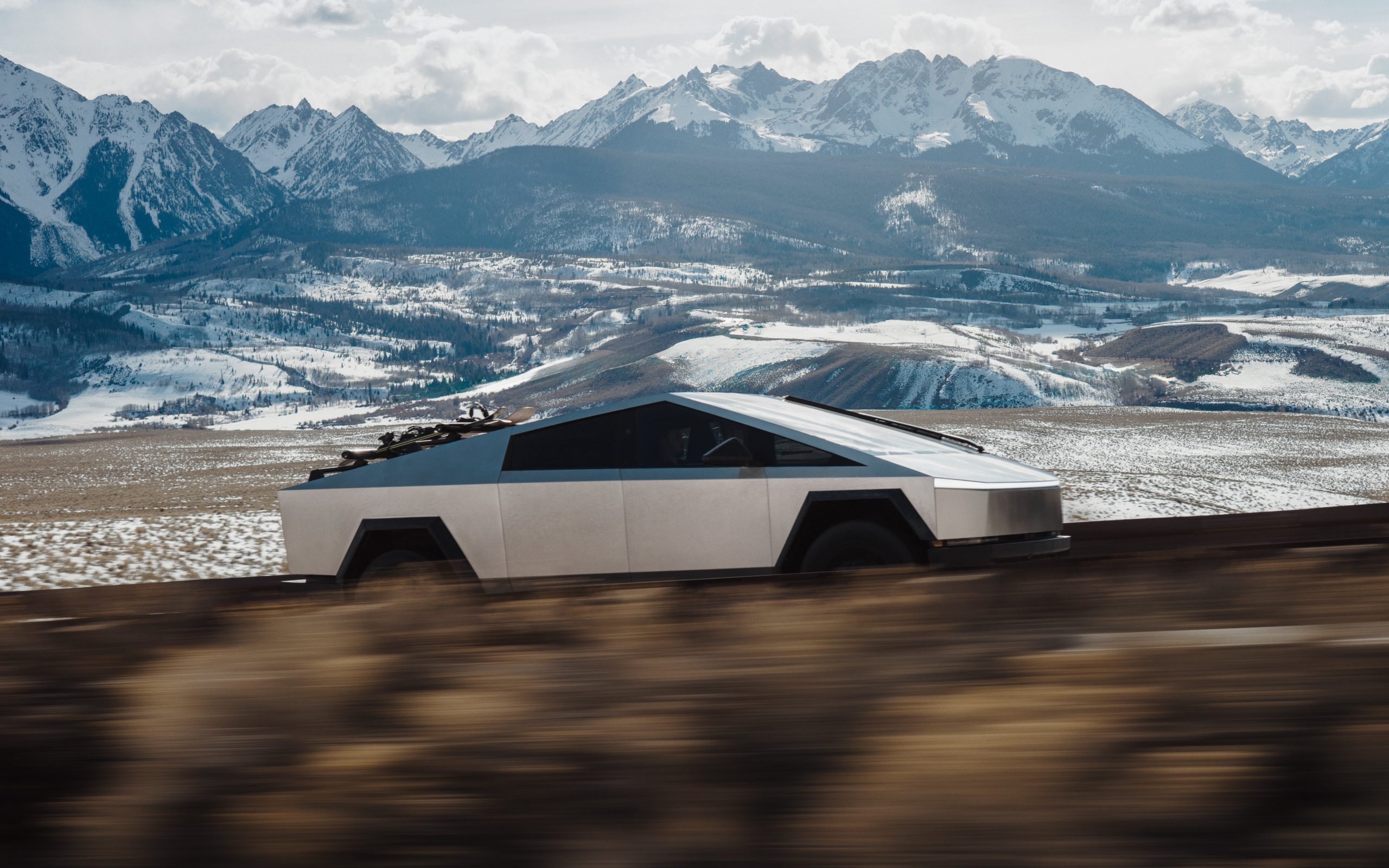
Credit: Tesla
This could drive more fleet and retail buyers toward the Cybertruck, especially those committed to fully electric vehicles without a gas generator backup.
Strengthened Market Leadership and Brand Perception in Pure EVs
Ford’s pullback from large EVs–citing unprofitability and lack of demand for EVs of that size–highlights the challenges legacy automakers face in scaling profitable battery-electric vehicles.
Tesla, as the established leader with efficient production and vertical integration, benefits from reinforced perception as the most viable and committed pure EV manufacturer.
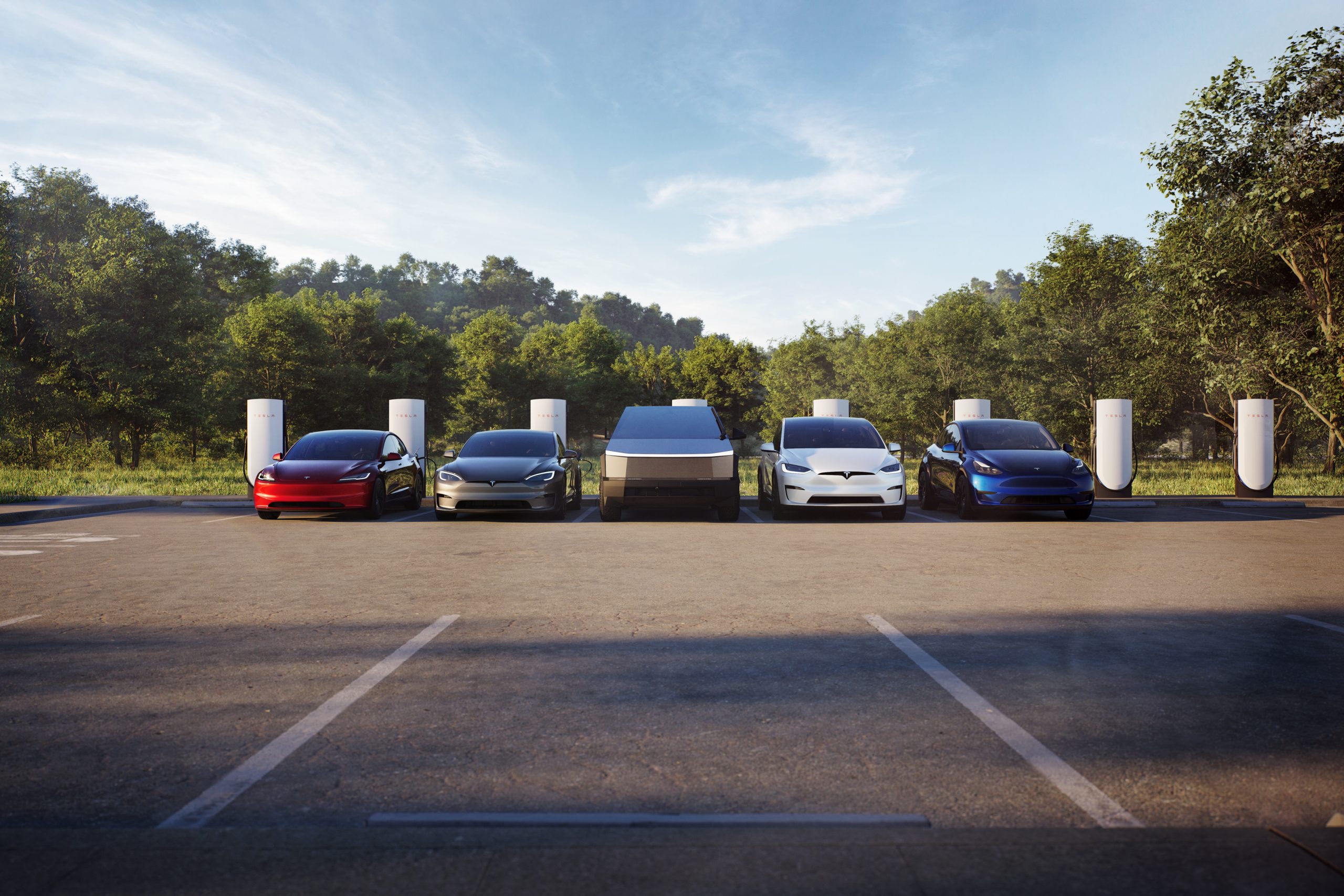
Credit: Tesla
This can boost consumer confidence in Tesla’s long-term ecosystem over competitors retreating to hybrids. With Ford making this move, it is totally reasonable that some car buyers could be reluctant to buy from other legacy automakers.
Profitability is a key reason companies build cars; they’re businesses, and they’re there to make money.
However, Ford’s new strategy could plant a seed in the head of some who plan to buy from companies like General Motors, Stellantis, or others, who could have second thoughts. With this backtrack in EVs, other things, like less education on these specific vehicles to technicians, could make repairs more costly and tougher to schedule.
Potential Increases in Market Share for Large EVs
Interestingly, this could play right into the hands of Tesla fans who have been asking for the company to make a larger EV, specifically a full-size SUV.
Customers seeking large, high-capability electric trucks or SUVs could now look to Tesla for its Cybertruck or potentially a future vehicle release, which the company has hinted at on several occasions this year.
With Ford reallocating resources away from large pure EVs and taking a $19.5 billion charge, Tesla stands to capture a larger slice of the remaining demand in this segment without a major U.S. competitor aggressively pursuing it.
News
Ford cancels all-electric F-150 Lightning, announces $19.5 billion in charges
“Rather than spending billions more on large EVs that now have no path to profitability, we are allocating that money into higher returning areas, more trucks and van hybrids, extended range electric vehicles, affordable EVs, and entirely new opportunities like energy storage.”
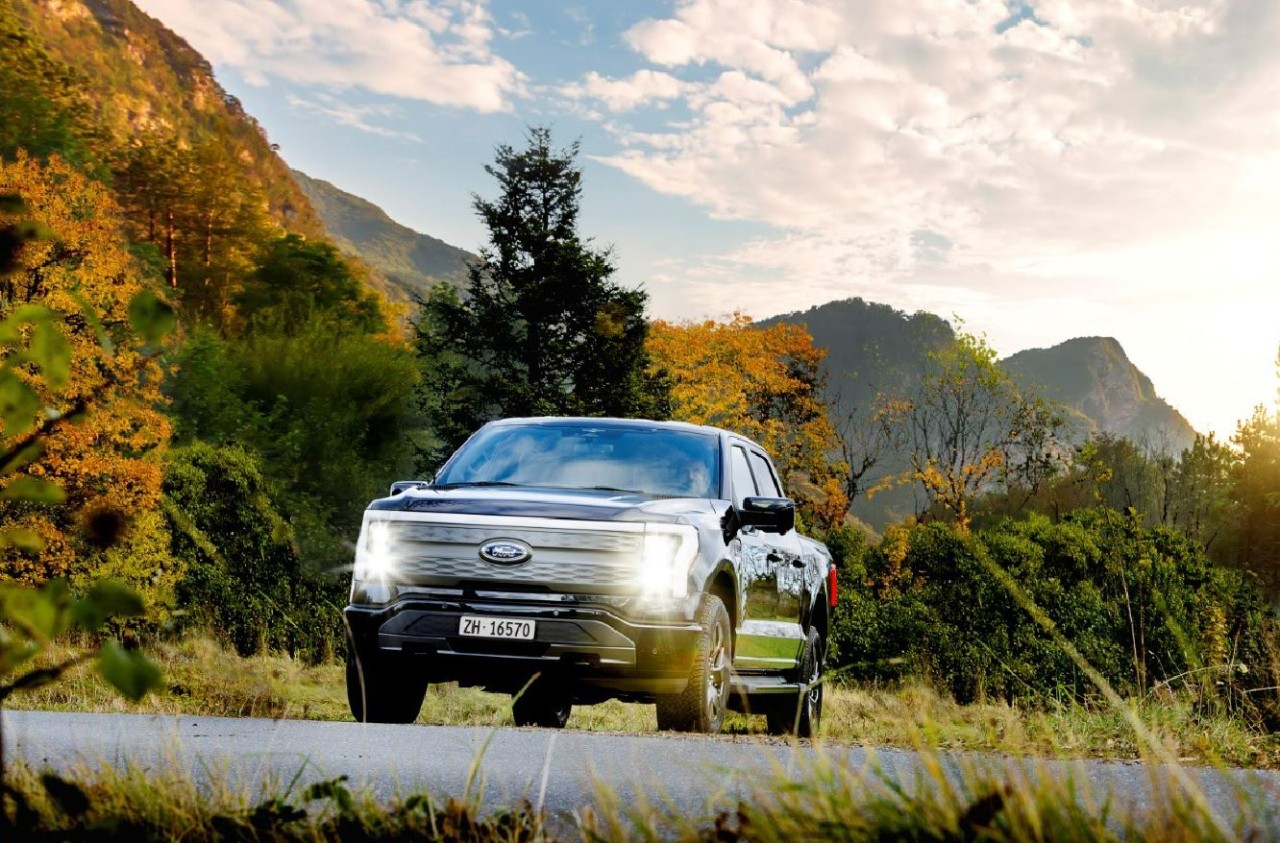
Ford is canceling the all-electric F-150 Lightning and also announced it would take a $19.5 billion charge as it aims to quickly restructure its strategy regarding electrification efforts, a massive blow for the Detroit-based company that was once one of the most gung-ho on transitioning to EVs.
The announcement comes as the writing on the wall seemed to get bolder and more identifiable. Ford was bleeding money in EVs and, although it had a lot of success with the all-electric Lightning, it is aiming to push its efforts elsewhere.
It will also restructure its entire strategy on EVs, and the Lightning is not the only vehicle getting the boot. The T3 pickup, a long-awaited vehicle that was developed in part of a skunkworks program, is also no longer in the company’s plans.
Instead of continuing on with its large EVs, it will now shift its focus to hybrids and “extended-range EVs,” which will have an onboard gasoline engine to increase traveling distance, according to the Wall Street Journal.
“Ford no longer plans to produce select larger electric vehicles where the business case has eroded due to lower-than-expected demand, high costs, and regulatory changes,” the company said in a statement.
🚨 Ford has announced it is discontinuing production of the F-150 Lightning, as it plans to report a charge of $19.5 billion in special items.
The Lightning will still be produced, but instead with a gas generator that will give it over 700 miles of range.
“Ford no longer… pic.twitter.com/ZttZ66SDHL
— TESLARATI (@Teslarati) December 15, 2025
While unfortunate, especially because the Lightning was a fantastic electric truck, Ford is ultimately a business, and a business needs to make money.
Ford has lost $13 billion on its EV business since 2023, and company executives are more than aware that they gave it plenty of time to flourish.
Andrew Frick, President of Ford, said:
“Rather than spending billions more on large EVs that now have no path to profitability, we are allocating that money into higher returning areas, more trucks and van hybrids, extended range electric vehicles, affordable EVs, and entirely new opportunities like energy storage.”
CEO Jim Farley also commented on the decision:
“Instead of plowing billions into the future knowing these large EVs will never make money, we are pivoting.”
Farley also said that the company now knows enough about the U.S. market “where we have a lot more certainty in this second inning.”








